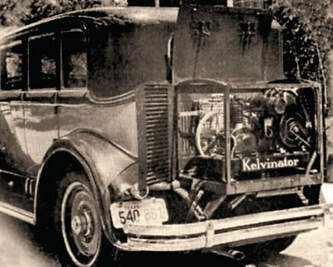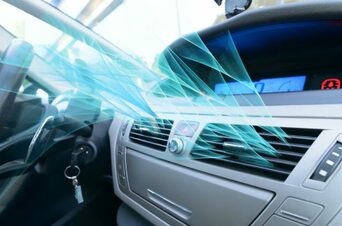 by P Sanchez Recently, a research conducted by IMR Inc. shows the top 10 repair jobs that vehicle owners and car repair shops do to cars. They are: Oil and oil filter changed* Wiper blades replacement* Replace air filter* Scheduled maintenance New tires Battery replacement* Brake work Antifreeze added* Engine tune-up Wheels aligned/balanced Quite a few of the items on the list (the ones with the asterisks) are very doable DIY jobs which is great especially if you are trying to save a couple of dollars in labor. Plus, you can’t beat the sense of fulfillment of attending to the needs of your car like a bonafide grease monkey. But why have a professional do all the hard work for you? Aside from the huge convenience and the time saved on your part, I’ll present other notable reasons why DIY is not always the best way to go.
17 Comments
 By P Sanchez Last time we took a little stroll back in time and saw how driver and passengers deal with the cold in their private vehicles during the decade following the 1900s which were the formative decades of the automobile. For this article, we’re checking the parts that make the modern automobile heating system and know a few of its troubleshooting techniques.  By P Sanchez We’ve talked in length about the A/C system in cars, a little history, how they work and some common troubles that could happen. Cooling the cabin is cool and all (pun intended) but it’s not quite useful if you’re living up the chilly north. So it’s time to touch on the “H” part of a car’s HVAC system: Heating. As a first part, we’ll go a little bit in the interesting history and development of in-car heating. Later on, we’ll talk about its basic parts of modern heating systems and the possible troubles you should watch out for (and things you can do to fix them).  By P Sanchez Driving in a hot and humid day without air-conditioning is the pits. The prospect of sweating it out in your car will make you seriously consider your ridesharing options or ditching your commuting plans altogether. That's why having a good climate control system is more than a perk, it's a must-have. It’s important that car owners are keenly aware of the performance of your A/C system and knowing when it’s time to take your car to a car a/c repair specialists. Let’s look at a few common complaints about troubled A/C systems and get an idea of the possible reasons why they happen.  by P Sanchez In the 1900’s, the public has its first taste air-conditioned buildings, starting with the Missouri State Building in St. Louise World Fair in 1904. The building included a 1000 seat auditorium comfortably cooled by this new-fanged a/c technology. In the refrigeration front, General Electric introduced its first refrigerator compact enough for household use in 1911. Frigidaire and Kelvinator introduced their domestic refrigeration machines in 1915 and 1918 respectively. But it would be a couple more decades until the new cooling technology will be suitable enough for mobile application.  By P Sanchez Nowadays, it’s easy to take for granted the modern conveniences provided by the modern car, one of which is air-conditioning. Since it is a feature present in almost all cars in the last two decades, it’s hard to imagine that car a/c was an expensive luxury option in the time before. In this Auto Blog segment, we’ll take a short look in the history of automobile air-conditioning which is almost as old as the development of the modern automobile itself.  By P Sanchez Last time we discussed required general maintenance that you should do to your car to ensure a properly working braking system. We also discussed what the brake warning lights on the dash means and why you should always call a mechanic when you do get the warning. In this article, we’ll talk about unusual noises and behavior your car can make which may not trigger the brake warning system but should still tell you that there’s trouble with the brakes.  By P Sanchez Given how critical braking is to the overall safety of drivers and passengers, engineers have gone to great lengths making the car’s braking system one of the most reliable sub-system of any modern car. However, this does not mean it’s immune to wear or breakdown, particularly over the car’s entire service life. Neither does it mean you shouldn’t pay attention to its operation or provide periodic maintenance. This article aims to show what you need to do to keep your brakes running properly.  By Pep Sanchez Many consider car ownership as a hobby of sorts and part of that hobby is putting a good deal of attention to removing friction. Whether it’s adding special additives to the engine oil, greasing all exposed hinges and moving joints, or installing aftermarket body parts for improved aerodynamics, making our machines as slippery as possible can sometimes approach obsession. But there are a couple of areas in the workings of the automobile where friction is welcomed, or more accurately, implemented by design. One very important area is in braking. In fact, it doesn’t matter if your vehicles can go only 20 mph or 120 mph: unless it can be slowed down or stopped at exact measures, a car is nothing more than a metal death trap. Without braking technology, wheeled transport is surely a lot less appealing. |
AuthorSmith's Auto Repair serves Dayton, Ohio and the surrounding communities using digital inspection service for all its customers ArchivesCategories |

 RSS Feed
RSS Feed